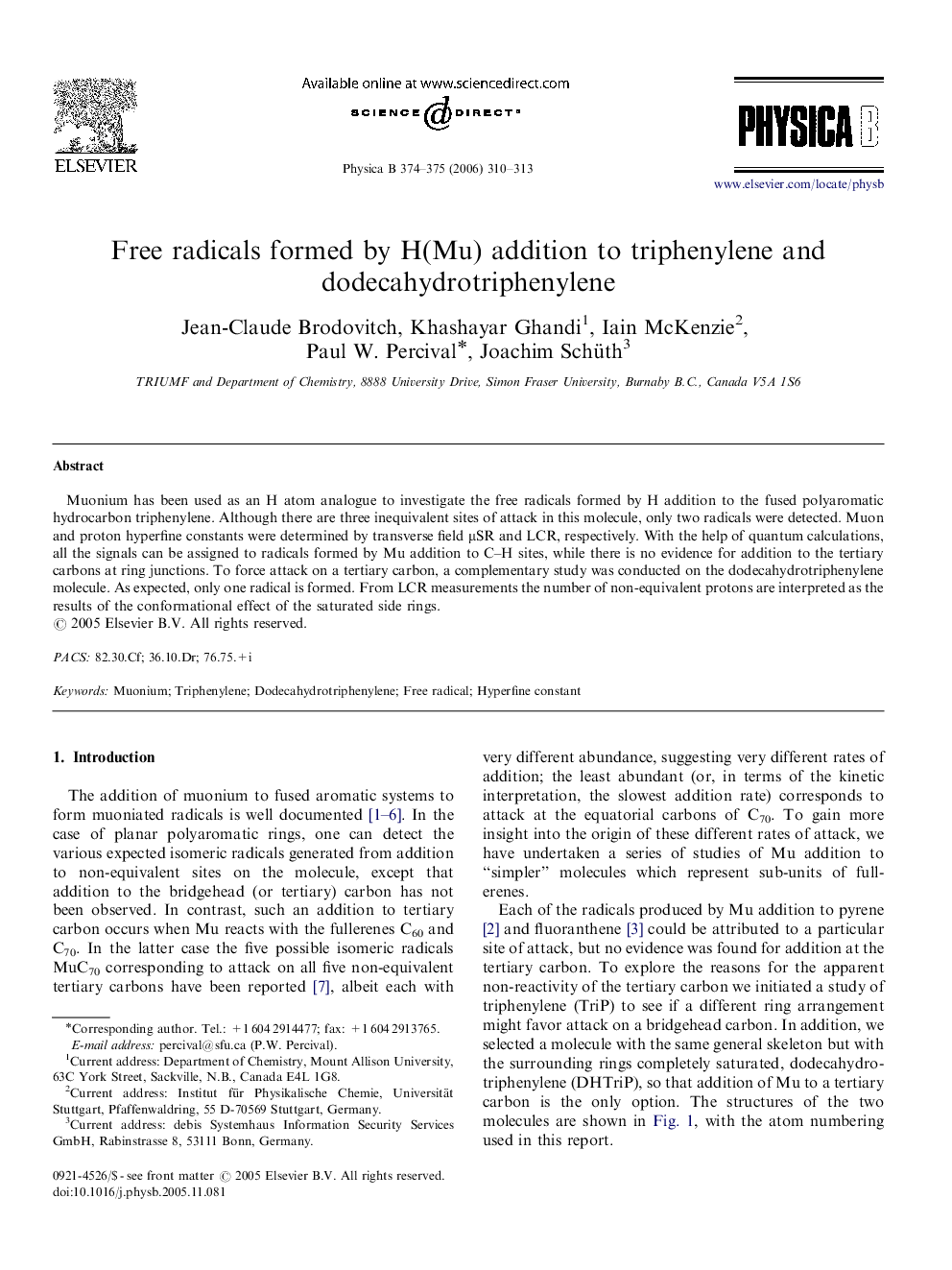| Article ID | Journal | Published Year | Pages | File Type |
|---|---|---|---|---|
| 1816821 | Physica B: Condensed Matter | 2006 | 4 Pages |
Muonium has been used as an H atom analogue to investigate the free radicals formed by H addition to the fused polyaromatic hydrocarbon triphenylene. Although there are three inequivalent sites of attack in this molecule, only two radicals were detected. Muon and proton hyperfine constants were determined by transverse field μSR and LCR, respectively. With the help of quantum calculations, all the signals can be assigned to radicals formed by Mu addition to C–H sites, while there is no evidence for addition to the tertiary carbons at ring junctions. To force attack on a tertiary carbon, a complementary study was conducted on the dodecahydrotriphenylene molecule. As expected, only one radical is formed. From LCR measurements the number of non-equivalent protons are interpreted as the results of the conformational effect of the saturated side rings.
